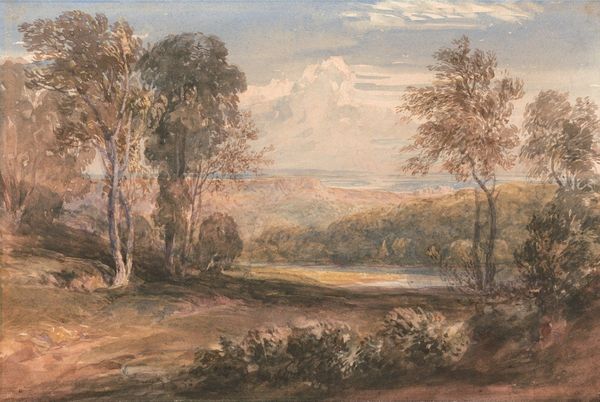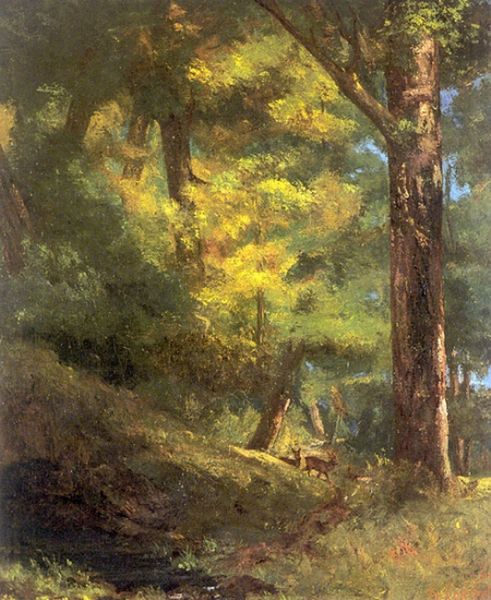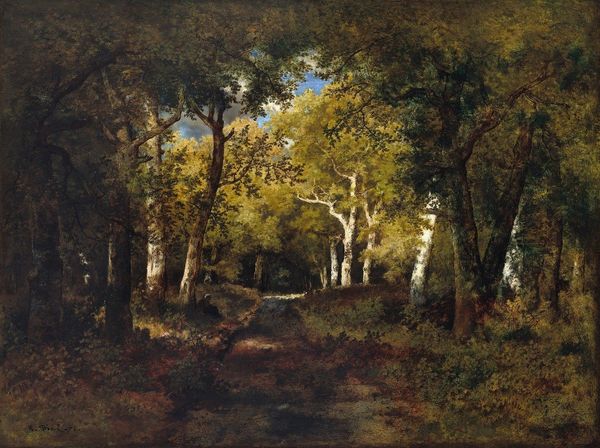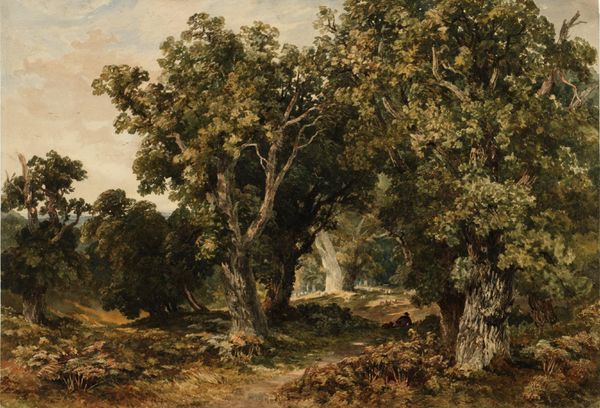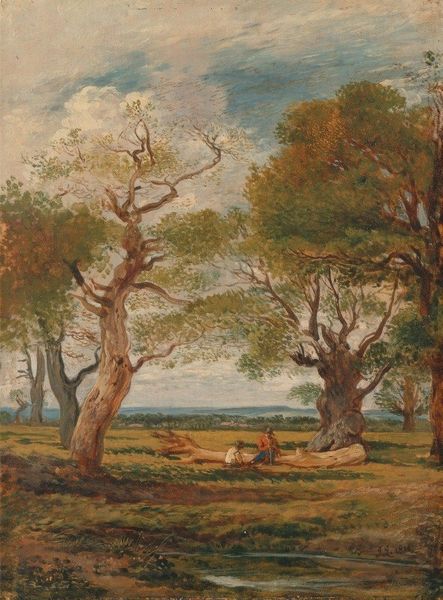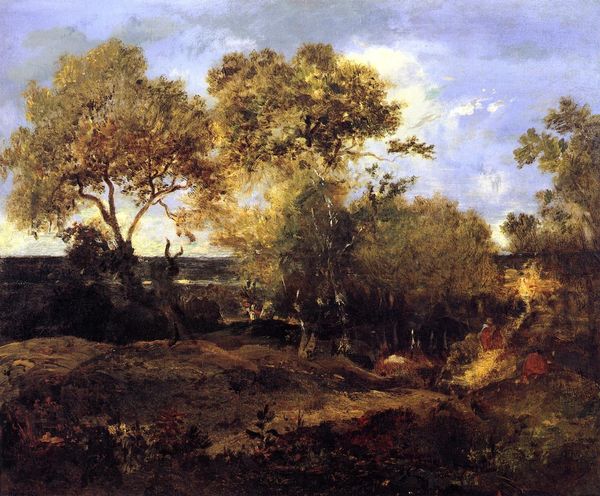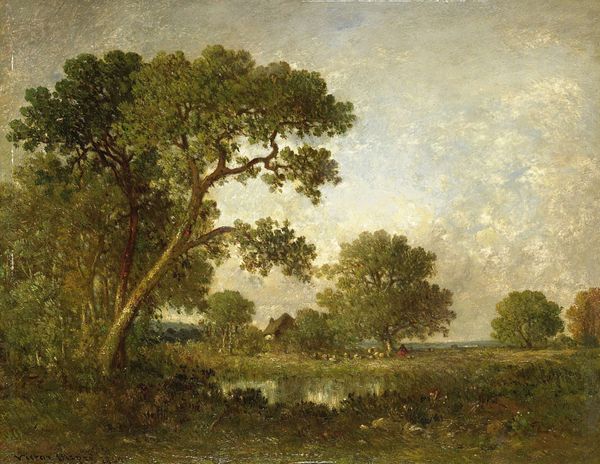
The Large Oak Tree, Forest of Fontainebleau 1839
0:00
0:00
theodorerousseau
Saint Louis Art Museum, St. Louis, MO, US
painting, plein-air, oil-paint
#
tree
#
sky
#
painting
#
plein-air
#
oil-paint
#
landscape
#
figuration
#
form
#
forest
#
plant
#
romanticism
#
natural-landscape
#
men
#
naturalism
#
realism
Copyright: Public domain
Théodore Rousseau made this painting of the Forest of Fontainebleau in France using oil on canvas. Rousseau was a leading figure in the Barbizon school of landscape painters, who challenged the dominance of academic painting in 19th-century France. The location itself held a unique status. Fontainebleau Forest, near Paris, served as a hunting ground for the French monarchy and aristocracy. It was a carefully managed space, reflecting the social hierarchy of the time. Rousseau and his peers sought to represent the forest in a more democratic way, focusing on its natural beauty rather than its value to the elite. We see a shift in the role of landscape painting; it became a vehicle for social commentary, questioning established power structures. To fully appreciate this shift, examining Salon exhibition records, artists' correspondence, and period reviews can provide valuable insights into the social and institutional context of this artwork.
Comments
No comments
Be the first to comment and join the conversation on the ultimate creative platform.

